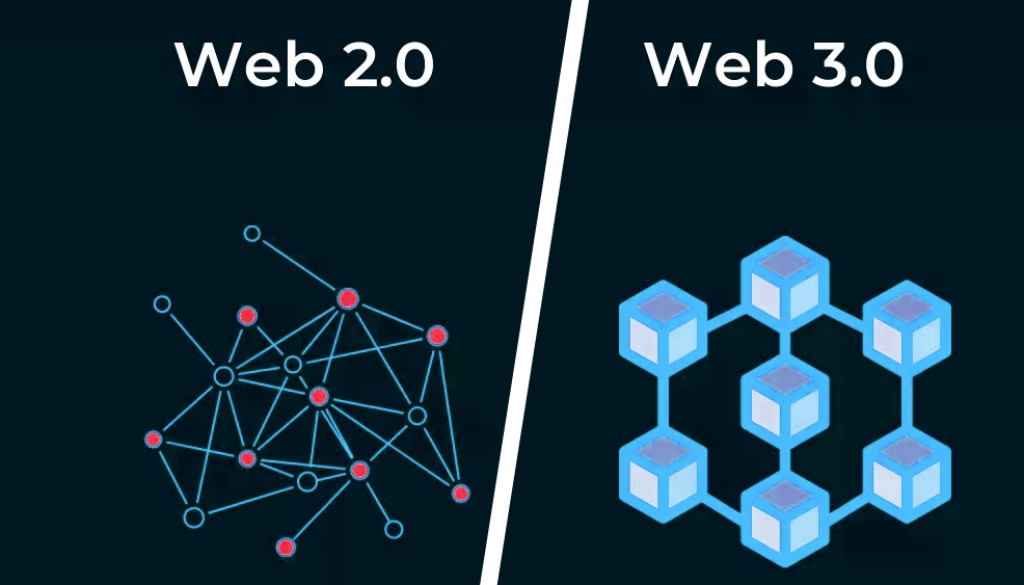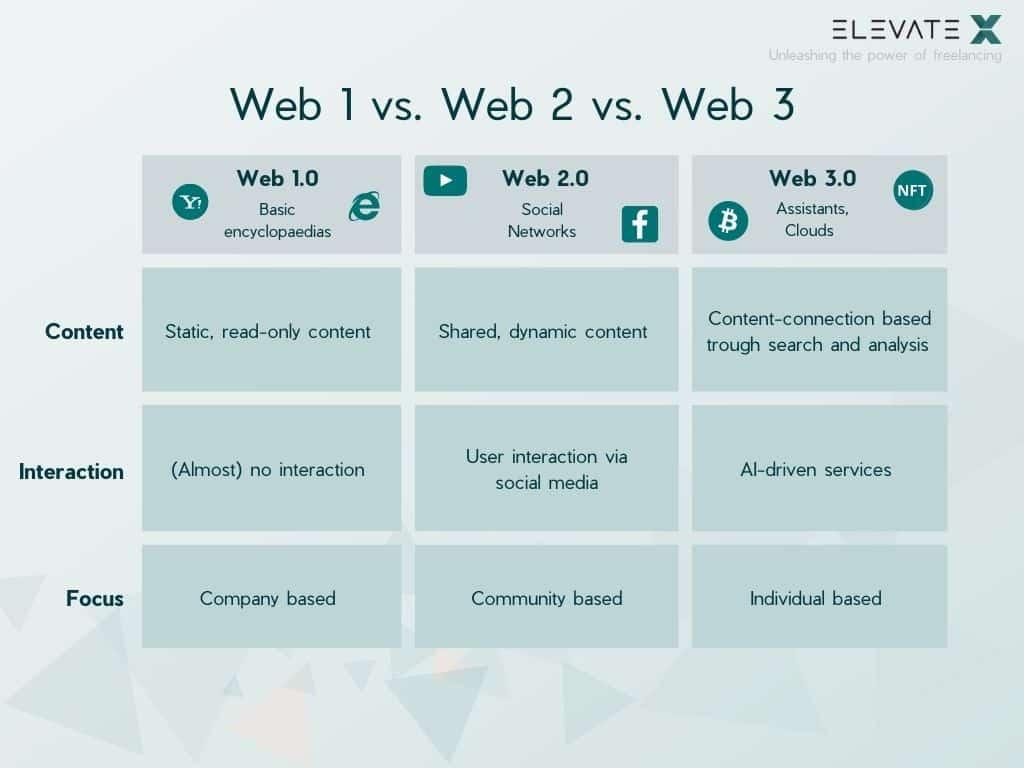Web 2.0 vs Web 3.0: Understanding the Evolution of the Internet

Web 2 and Web 3 are two different stages of the evolution of the internet. Web 2.0 was a term coined in the early 2000s to describe a shift in the way people used the internet, from a static read-only medium to a more dynamic, interactive platform. Web 2.0 brought about the rise of social media, online communities, and user-generated content, allowing users to participate in the creation and sharing of information on a massive scale.

Web 3, on the other hand, is still in the early stages of development and represents a more radical departure from the current state of the internet. Web 3.0 is often described as the decentralized web, with a focus on creating a more open and transparent internet that prioritizes privacy, security, and user control.
One of the primary differences between Web 2.0 and Web 3.0 is the way in which data is managed. Web 2.0 relies heavily on centralized platforms and data silos controlled by a handful of large corporations. In contrast, Web 3.0 is built on decentralized networks that use blockchain technology to create a more transparent and secure internet.
Another key difference between the two is the way in which value is generated and distributed. In Web 2.0, value is largely created by corporations, which then monetize user data through advertising and other means. In Web 3.0, value is more distributed, with users able to earn rewards for contributing to the network and using decentralized applications.
Overall, Web 3.0 represents a more democratic and decentralized future for the internet, with the potential to create a more equitable and user-centric online environment. However, it is still very much in its early stages, and it remains to be seen how quickly it will be adopted and how it will ultimately reshape the internet as we know it.
- Political Leaders
- Art & Crafts
- Dance & Music
- Sanatan Dharma
- Education & Training
- Food & Drinks
- Gaming
- Health & Fitness
- Home & Gardening
- Literature & Culture
- Love
- Medicine & Ayurveda
- Motors & Vehicles
- Movies & Cinema
- Parenting
- Politics
- Science & Technology
- Shopping
- Social Media
- Spirituality
- Sports
- War & History
- Yoga & Meditation
- Travel & Tourism
- Natural Disaster
- Business & Startups
- DIY & Home Decor
- Finance
- Personal
- News
- Pet Lovers
- Wild Life & Nature
- Podcast & Audio Books
- Poetry
- Law & Order
- Moral Stories
- Jokes & Humour
- Other

